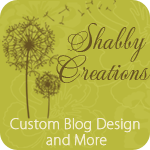A former student who is now attending college with a full scholarship named all my harps. She even found the perfect name my dog - Archi - which means a stringed instrument. (Clever girl!)
 |
| HARMONY |
Harmony is the grand dame of my studio. Her birthday is March 22, 1915 - so she is over 100 years old. My parents purchased her from my orchestra director's wife when I was in high school and she has been with me ever since. She is a Lyon and Healy, Style 22, which is a 46 string semi grand harp, with 22 carat gold leaf trim and tiger maple body. They are no longer manufactured. She is a couple of inches shorter, a little lighter and has one less string than a concert grand. For me she is the perfect size. A few years ago, she got a beauty makeover at the factory in Chicago, but all the mechanism and all the wood parts are original which is very unusual for a harp of her age. She just has good bones. Her tone is exquisite - large and warm. Love her!
 |
| LILAH |
Lilah is also a semi-grand,with a beautiful custom hand painted soundboard and mahogany finish. She was made by Salvi Harps Inc. Her birth year was 2008 and I've had her ever since. Although she is on a semi grand frame, she has the 47 strings like a concert grand. This is the harp that is used by my students in the studio who play pedal harp at home, so she gets a lot of love and attention. Salvi has come up with many innovative design changes over recent years. She has a wider soundboard in the upper registers, giving her a more balanced sound. And Lilah has the unique honor of being autographed with a gold pen on the bottom of the base by Victor Salvi himself.
 |
| PABLO |
Don't ask me how my student arrived at this name or decided Pablo was a boy! He is a 36 string, fully levered harp. manufactured by Pratt Harps, Chamber Harp model. Built in 2003, there are two unique features of this lever (or folk harp); the extended sound box which is usually only on larger pedal harps, and concert tension on the strings. Both features give him a deep, full, rich sound. This harp is used in my studio by all lever harp players. He has a beautiful finish of Bubinga wood with a interesting twist on the veneer. As explained by the luthier, instead of slicing through a log to make planks, the log is turned on a lath to peel off layers. This gives the grain a beautiful and truly unique appearance.
 |
| ZEFFIROSO |
In German, Zeffiroso means light and airy. He is a 36 string lever harp, Legend model, made by Heartland Harps. "Zeff" was born in January, 2012. He has a carbon fiber body which makes his total weight only 10 pounds. Carbon fiber is the material used in expensive sports cars. It is becoming more and more popular for instruments. Heartland Harps are the first ones to come out with an innovative carbon fiber harp. The black finish is the natural color. It can be painted any color that you can paint a car, but it changes the tone. Because there is no wood, it is impervious to water and heat making it safer to carry in a car. Also because there is no wood, you have the added bonus of string pitch remaining very stable since there is no expanding and contracting of the wood with temperature changing. The sound is amazingly large and projects well. This is the perfect gigging harp.
 |
| LIAM |
Liam is a beautiful Celtic laddie. There is intricately detailed and ornate Celtic markings running down the sides of the soundboard as well as the soundboard itself, and the sides and front of the column. He is a 30 string Clark Irish Harp and was made sometime in the early 1900's; so he has a dubious past. These were the first "lever" harps manufactured in the United States and caused quite a stir which started the up surgence of all lever harps. Before that, there were only pedal harps for students to start learning on. He has ivory pegs to hold in the strings and blade levers which are archaic compared to today's levers. Liam sits on a stand which has a lever in the back allowing the harp to tip back while the stand remains on the floor. He can be placed on the floor and sits on little lion paws. When I was a girl, I played him occasionally in recitals and on St. Patrick's Day. He is completely strung, but not played anymore. His home is here for historical and sentimental reasons.
 |
| BABY BELLA |
Baby Bella is a 22 string lap harp make by Breton. Her birth year was 2004 but she will never grow up, I'm afraid! She is fully levered and easy to play either using knee bones across the tops of your knees (hence the name), or held between your knees with your ankles crossed (a little harder!) This is the perfect size harp for traveling, conferences, and workshops. Just like a baby, she can't stand up by herself, so I adapted a guitar stand to hold her when she is not in use.



















